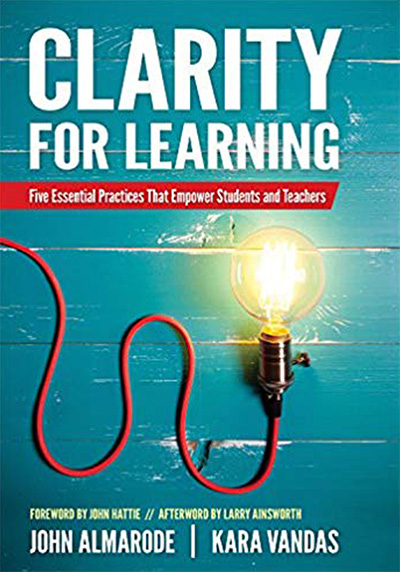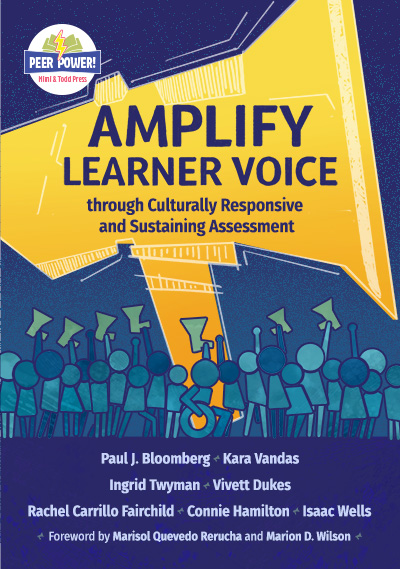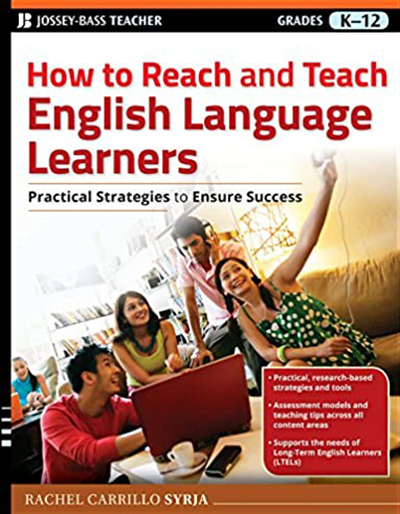Do your classrooms cultivate clarity, engagement, and efficacy for all learners?
What are your ‘learner-centered instruction’ goals?
A simple, doable approach to develop clarity and share it with students.
View PD OptionsA competency-based, student-centered approach to lasting literacy learning.
View PD OptionsPractical strategies and tools for multilingual learners
View PD OptionsQuality, Customized Professional Learning That Works
Our professional learning pathways all have the same goal, to advance learner ownership, efficacy, and agency. We partner with your system to assess your needs and co-construct an action plan anchored in implementation science. We are ready to help and support you at any stage of your learning journey.
Our Learning Progression
Foundational Learning
Build a shared language of learning anchored in co-constructed goals and success criteria aligned to your mission and vision.
Job-Embedded Coaching
Empower educators using the gradual release of responsibility to model, coach, monitor, and analyze progress towards shared goals.
Sustainable Systems
Advance teacher agency to ensure risk-taking, innovation, and collective efficacy through quality implementation.
Clarity for Learning and Impact
Are both teachers and students clear about what must be learned, why students are learning it, and how they can be successful? Are students able to determine their next steps in learning through quality feedback and assessment? Clarity for Learning, by best selling author and assessment expert, Kara Vandas, offers a simple and doable approach to developing clarity and sharing it with students.
Clarity for Learning and Impact
This professional learning series offers five powerful practices that include:
- Gaining clarity as educators
- Sharing clarity and advancing student agency
- Assessing with clarity
- Feedback with clarity
- Collaborating with clarity: Impact Teams
Clarity for Learning: Five Essential Practices that Empower Students and Teachers
Kara Vandas and John Almarode
Learner-Centered Literacy
Do your teachers have the preparation and support they need to ensure students are able to experience and enjoy literacy through meaningful, fluent reading and writing?
Empower teachers with the clarity and strategies necessary for the teaching of the five pillars of reading: phonemic awareness, phonics, fluency, vocabulary, and comprehension anchored in the sciences of reading. Teachers will refine their process for making instructional decisions based on the strengths and needs of the students in front of them deciding, when, how, and why to use the resources available to them.
Systematic Instruction in Phonemic Awareness, Phonics and Spelling
Start learners’ literacy journey off right with a solid foundation. When students develop the phonemic awareness necessary to recognize, distinguish, and manipulate the sounds that make up words and the phonics necessary for recognizing and recreating printed words, the print world is opened to them. Through explicit instruction and carefully guided practice, students can not only make accelerated progress, but learn when and how to use the strategies teachers are modeling and sharing.
Learn and apply research-based instructional strategies to ensure all students:
- Develop, practice, and apply phonemic awareness
- Learn and use phonics to decode words as readers and encode words as authors
- Make the most of meaningful, engaging, decodable readers
Amplify Learner Voice Through Culturally Responsive and Sustaining Assessment
Paul J. Bloomberg, Ed.D., Kara Vandas, Ingrid Twyman, Vivett Dukes, Rachel Carrillo Fairchild, Connie Hamilton and Isaac Wells
Strengthening Fluency
Increase students’ understanding and enjoyment of anything and everything they read by focusing on fluency. Reading fluency is the combination of accuracy, rate, and prosody (the rhythm, stress, and intonation that bring words to life). This skill asks learners to apply the foundational skills they are developing and facilitates reading comprehension. Learn to use explicit instruction and proven strategies for learning, practicing, and monitoring, this bridge between word recognition and language comprehension.
Learn and apply research-based instructional strategies to ensure all students:
- Receive explicit instruction supporting the development of accuracy, rate, and prosody necessary for reading comprehension
- Develop strategies for self-monitoring, problem-solving, and correcting errors to increase accuracy
- Engage in authentic, deliberate practice working toward personalized goals
Amplify Learner Voice Through Culturally Responsive and Sustaining Assessment
Paul J. Bloomberg, Ed.D., Kara Vandas, Ingrid Twyman, Vivett Dukes, Rachel Carrillo Fairchild, Connie Hamilton and Isaac Wells
Vocabulary and Knowledge Building
Knowledge building and vocabulary acquisition are foundational pillars of effective learning and literacy development. Vocabulary acquisition not only facilitates comprehension but also empowers learners to engage more deeply with complex texts and concepts. By continually building knowledge and expanding vocabulary, students enhance their cognitive abilities, critical thinking skills, and overall academic and professional success through morphology or making meaning of words using context clues.
Learn and apply research-based instructional strategies to:
- Develop techniques to actively engage students in vocabulary acquisition
- Facilitate the integration of vocabulary acquisition approaches and knowledge building into daily instruction
Amplify Learner Voice Through Culturally Responsive and Sustaining Assessment
Paul J. Bloomberg, Ed.D., Kara Vandas, Ingrid Twyman, Vivett Dukes, Rachel Carrillo Fairchild, Connie Hamilton and Isaac Wells
Deepening Comprehension
The ultimate goal of reading is to understand and engage with texts. Learn to provide direct, explicit instruction that empowers students to make sense of, analyze, interpret, and even enjoy texts. Learn to provide direct, explicit instruction to empower students to solve, learn, and understand new vocabulary, to make connections to texts, including their prior knowledge and experiences, and to think critically and analytically about explicit and inferential information.
Learn and apply research-based instructional strategies to ensure all students:
- Self-monitor comprehension via self regulation when meaning breaks down
- Actively make connections with, between, and to texts, including with their prior knowledge and experiences
- Apply strategies that promote active knowledge building for all levels of rigor (surface, deep, and transfer)
- Develop strategies to think critically and analytically about explicit and inferential information in any text
Amplify Learner Voice Through Culturally Responsive and Sustaining Assessment
Paul J. Bloomberg, Ed.D., Kara Vandas, Ingrid Twyman, Vivett Dukes, Rachel Carrillo Fairchild, Connie Hamilton and Isaac Wells
Writing: Thinking on the Page and Screen
Students need direct, explicit instruction and opportunities for deliberate practice, feedback and revision.. Our writing approach focuses on teaching students the foundational skills of writing through sentence-level activities, such as sentence expansion and combining, before progressing to more complex tasks like paragraph and essay writing. We connect writing directly with reading so that students can think critically about texts, apply and transfer the vocabulary and concepts they are learning, deepen content knowledge, understand author’s craft, and emulate the writing experts they see as mentors.
Learn and apply research-based instructional strategies to ensure all students:
- Have the foundational skills they need to write clearly, fluently, and independently to communicate ideas effectively
- Can apply the writing process to generate, organize, clarify, and refine their own thinking and their understanding of what they are learning
Amplify Learner Voice Through Culturally Responsive and Sustaining Assessment
Paul J. Bloomberg, Ed.D., Kara Vandas, Ingrid Twyman, Vivett Dukes, Rachel Carrillo Fairchild, Connie Hamilton and Isaac Wells
Reach and Teach Multilingual Learners
Written and designed by multilingual (ML) learner Rachel Carrillo Fairchild, who later became a classroom teacher and ML expert nationally. Our hands-on learning series offers practical strategies and tools for assessing and teaching the most hard-to-reach learners.
How to Reach and Teach Multilingual Learners
Honor the cultures of our multilingual (ML) learners to accelerate their progress and growth using evidence based practice anchored in culturally responsive-sustaining practices.
- Understand how humans acquire language
- Identify language acquisition levels
- Assessing and giving feedback to ML learners
- Engaging families of ML learners
- Making content comprehensible
How to Reach and Teach English Language Learners: Practical Strategies to Ensure Success
Rachel Carrillo Fairchild
Resources
Meet the Pathway Team
Let's Connect
Complete the form below and we’ll be in touch to create a solution that addresses your needs and achieves your goals in learning spaces.
Prefer to talk on the phone? No problem! You can give us a call at: 619-432-2673
This form is on the "Let's Connect" Section on the Homepage
"*" indicates required fields











